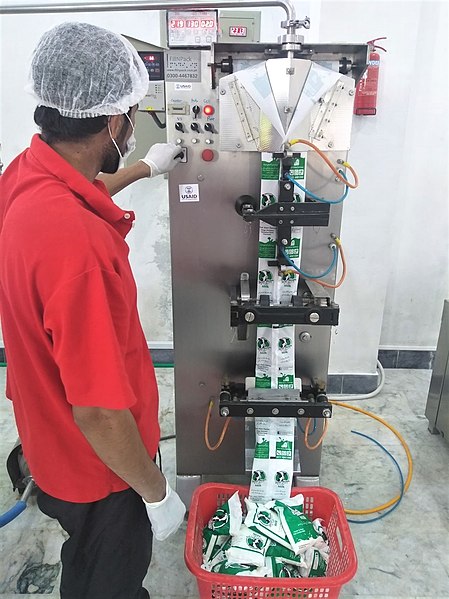If you’re just starting in the packaging industry, you’re probably overwhelmed with the vast selection of different liquid filling machines in the market. They are used for filling various liquids at various speeds and volumes.
When choosing the suitable liquid filler, it’s crucial to consider several important factors:
Things to Consider to Choose the Ideal Liquid Filler
Filling machines are mostly custom build for specific products and projects. While there are many things to think about when choosing a suitable machine, several primary considerations constantly reoccur. Fillers may vary a lot depending on several crucial aspects, including:
Liquid Viscosity
Some machines are built to work with thin products, some work great with thick liquids, and others work with both. The packager needs to consider the product’s viscosity to ensure the machine they choose can handle their product to select the correct filler. For example, for a free-flowing liquid product like water, overflow fillers may be perfect.
However, the same filler may not be equipped to handle thicker products like honey or gel. A better solution would be a piston filler or a pump filling machine. They are categorized by product viscosity, among other parameters, and it’s a crucial aspect to consider when choosing a suitable machine for your product.
Fill Principle
The method of filling you plan to use to fill the containers with the product is another essential aspect when choosing the correct machine. Some fillers use an overflow system that fills every unit to the same level, regardless of the fact the interior volume of the containers may be different for each one. They are ideal for see-through containers.
On the other hand, some fillers fill products by volume using gravity filling or a piston. While they may vary in fill levels from unit to unit, they add the same volume to each container. There are other principles as well, and each of them plays a significant role in picking the ideal filling machine for a specific product. For example, not all products or container types require the same cappers – and you need to choose your liquid capping machine based on the filler you’ve chosen.
For example, Acasi Machinery offers several different capping machines, and you need to know many parameters to choose the right one.
Automation
Most liquid fillers can work as semi-automatic or fully automatic machines. The specification and requirements of your product will help you determine what type of machine would work perfectly for your packaging system.
For example, a regional packager with a small product demand may want to start with small tabletop liquid fillers or even semi-automatic portable fillers. However, a larger facility with significant production volume and many containers to fill daily will usually begin with an automatic liquid filling machine. The type and size of the containers is also an important aspect to consider because it differentiates whether you require an automatic filler or something semi-automatic.
Production Volume
The number of containers and bottles you want to fill per hour is also crucial for choosing the suitable filler. Above anything else, it will help you decide how much automation you need your filling machine to include. If you’re a packager that needs to fill a few hundred bottles, a semi-automatic filler may do the trick. However, sometimes, even smaller packaging volumes require full automation, depending on the product and production volume.
When choosing your filler, you should not only think about your current product demand but also consider the future and expected production volume growth.
Cleaning and Changeover
Some fillers are significantly more straightforward to change over than others. Changeover and cleaning time is crucial for most packaging lines, especially if you pack many different products or short runs. Some fillers may require complete disassembly for all the components to be clean and prepare everything for a new product. Many machines allow you to program CIP (clean-in-place) systems in the operator interface. It makes the entire cleaning process much quicker and simple – it requires minimal to no disassembly and far less assistance from workers. Deciding if your filler needs to have a CIP is a differentiating factor in buying the ideal machine for your packaging system.
Choose the Right Liquid Filling Machine
As you can see, there are many things to consider when buying an ideal filling machine. Depending on your plans, product, and production volume, choosing the suitable filler may require some research and comparisons, but taking your time to go through everything that may fit your business and selecting the ideal one is always a good idea. What works for one packager may not work for someone else because many things may differ from one business to another. Once you choose the type of containers and determine the number of products you plan on packing every day, it will be much easier to focus on finding the ideal filling machine.

